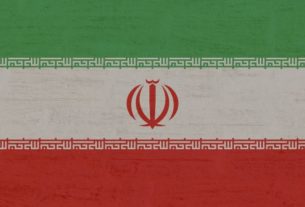Chanukah is the only Yom Tov not mentioned in Tanach. That’s why the Talmud asks (Shabbos 21b), “What’s Chanukah?” In answer, it describes in detail, not the stupendous military victory of the few over the many and the weak over the strong, but the spiritual miracle:
“When the Greeks entered the Sanctuary, they defiled all the oils in the Sanctuary. When the royal house of the Chashmona’im overcame and defeated them, they searched and found only one jug of oil left with the seal of the kohen gadol. It contained only enough oil to light [the menorah] for one night. [But] a miracle occurred with it and they used it to light for eight days” – until new pure oil could be prepared and brought to Yerushalayim.
‘);
_avp.push({ tagid: article_top_ad_tagid, alias: ‘/’, type: ‘banner’, zid: ThisAdID, pid: 16, onscroll: 0 });
Why was it important for the jug to be sealed “with the seal of the kohen gadol”? In order to prove that the oil was undefiled, wouldn’t it have been sufficient if its seal remained unbroken, even without the kohen gadol’s personal seal?
The Rebbe explains that, according to Kabbalah, oil alludes to wisdom (a hint to this can be found in the Talmud, Menachos 85b: “Since they were accustomed to using olive oil, wisdom was prevalent among them”). Thus, when the Talmud states that the Greeks “defiled all oils in the Sanctuary,” it also means that they defiled the intellect of the Jews by inculcating them with Hellenist philosophy, which emphasizes using one’s intellect, not for spirituality, but for hedonism – pleasure for pleasure’s own sake.
The Greeks recognized the Torah’s intellectual profundity and the high moral level inherent in many mitzvos. But they refused to accept the Torah’s connection to Hashem. They tried to get the Jews to forget, not Torah, but “Your Torah” (as we say in V’al HaNissim). They also wanted to make the Jews transgress, not mitzvos, but “the mitzvos of Your will” (i.e., mitzvos that should be observed because G-d commands us to observe them).
But the Greeks were only able to corrupt the Jews’ intellect. They had no power over the essence of the Jewish soul – called “der pintele Yid” in Yiddish – which is beyond defilement and corruption.
What does the seal of the kohen symbolize? The kohen gadol’s sole occupation was serving Hashem. As the Rambam states, “He would sit all day in the [Beis] HaMikdash,” only leaving for home at night and an hour or two during the day. “His home,” rules the Rambam,” should be in Yerushalayim, and he should not leave there.” Yerushalayim, say Chazal, can be read as “yirah” (awe of G-d) and shaleim (perfect), so that it represents, in the spiritual sense, the ultimate perfection of yiras shamayim, the basis of all service of Hashem. So the kohen gadol, who remains continuously in Yerushalayim, within or close to the Beis HaMikdash, embodies the highest spiritual levels to which every Jew aspires.
Indeed, deep within every Jew’s soul, this exalted striving is always present, albeit usually concealed to a greater or lesser degree. It is this pintele Yid that is “stamped with the kohen gadol’s seal” and can never be defiled or corrupted.
So once the Chashmona’im discovered the hidden jug of oil stamped with the seal of the kohen gadol – the ultimate symbol of utter devotion to Hashem – they were able to reclaim and elevate every aspect of the “lamp of Hashem [which is] the soul of man” (Mishlei 20:27) so that they could utilize it to illuminate the world with the “lamp of mitzvos and the Torah of light.”
This task continues to this day as we celebrate Chanukah when we increase the light of holiness night by night, adding another light and another – a process that then continues in the spiritual sense year round until ultimately Moshiach will be revealed.
(Based on teachings of the Lubavitcher Rebbe)
‘);
_avp.push({ tagid: article_top_ad_tagid, alias: ‘/’, type: ‘banner’, zid: ThisAdID, pid: 16, onscroll: 10 });




